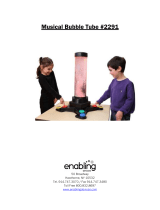
7
Defrosting
Frost will gradually accumulate on the refrigerating surfaces.
It must not be allowed to grow too thick as it acts as an insula-
tor and adversely affects refrigerator performance. Check the
formation of frost regularly every week and when it gets about
1/8” (3 mm) thick, defrost the refrigerator.
Shut off the refrigerator by turning knob (A) to “OFF” posi-
tion. Empty the refrigerator, leaving the cabinet and freezer
doors open. Filling the ice tray with hot water and placing it in
the freezer compartment can reduce defrosting time.
The defrost water runs from a collector channel to a drip tray/
cup at the rear of the refrigerator where it normally evaporates.
If heavy frost built up on the freezer plate and the cooling fins,
and a lot of defrost water, move the plastic drain tube in to a
watertight bucket or container.
As the frost melts, the water will flow into the container. When
all the frost has melted wipe up the excess moisture and empty
the accumulated water from the bucket. Replace the drain tube
to its original position. Defrost water in the freezer compart-
ment should be wiped up with a clean cloth.
When all the frost is melted, dry the interior of the refrigerator
with a clean cloth. Replace all food and set the thermostat to
“MAX” for a few hours. Then reset the thermostat to its normal
position.
CLEANING
Cleaning the refrigerator is usually done after it is defrosted
or put into storage. To clean the interior liner of the refrigera-
tor, use lukewarm weak soda solution. Use only warm water
to clean the finned evaporator, gasket, ice trays and shelves.
NEVER use strong chemicals or abrasives to clean these
parts, as the protective surfaces will be damaged. It is im-
portant to always keep the refrigerator clean.
HOW TO USE THE REFRIGERATOR
Total refrigerator volume: 8 cu.ft.
Food storage compartment
The food storage compartment is completely closed and un-
ventilated, which is necessary to maintain the required low tem-
perature for food storage. Consequently, foods having a strong
odor or those that absorb odors easily should be covered. Veg-
etables, salads etc. should be covered to retain their crispness.
The coldest positions in the refrigerator are under the cooling
fins and at the bottom of the refrigerator. The warmer areas are
on the upper door shelves. This should be considered when
placing different types of food in the refrigerator.
Frozen food storage compartment
Quick frozen soft fruits and ice cream should be placed in the
coldest part of the compartment, which is at the bottom of the
aluminum liner. Frozen vegetables, may be stored in any part of
the compartment. This compartment is not designed for deep or
quickfreezing of food. Meat or fish, whether raw or prepared,
can be stored in the frozen food storage compartment provided
they are precooled first in the refrigerator. They can be stored
about three times longer in the frozen food compartment as
compared to the fresh food compartment. To prevent food from
drying out, keep it in covered dishes, containers, plastic bags or
wrapped in aluminum foil.
Ice making
Ice cubes can be made in the ice tray placed in the freezer
compartment. The tray should be filled with water to within
1/4” (5 mm) from the top.
For faster ice making, the tray should be placed in direct
contact with the bottom of the freezer compartment. To release
the ice cubes seize the tray with both hands and twist the tray.
Cubes not required should be replaced in the tray. Refill the
tray with water and replace the tray in the freezer compartment.
Ice will be made more rapidly if the thermostat is set at its
highest position. It is a good idea to do this a few hours before
the anticipated need for ice, but be sure to turn the thermostat
back to normal setting, usually about mid-setting when the ice
is formed. Food in the lower compartment may be frozen if the
refrigerator is left on “MAX” position.
OPERATING INSTRUCTIONS
EXPLOSION HAZARD. Never store explosive
substances in the refrigerator, such as cigarette
lighter fuel, gasoline, ether or the like. Failure
to heed this warning could cause an explosion
resulting in death or severe personal injury.
Do not use:
A knife or an ice pick, or other sharp tools to
remove frost from the freezer shelves. It can
create a leak in the ammonia system
A hot air blower. Permanent damage could
result from warping the metal or plastic parts.
•
•















